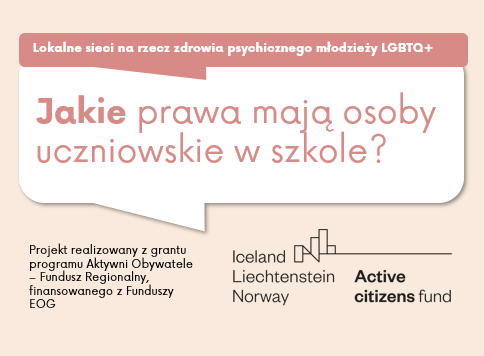What rights do students have?
📅02/04/2024, 18:24
✍️Zespół Fundacji GrowSPACE
🔗Share:

In Poland, students' rights are regulated in detail in various legal acts, mainly in the Education System Act and in regulations of the Ministry of National Education, which specify the rights and obligations of students in various types of schools. The basic rights of students include:
• The right to be safe: Students have the right to be safe during and outside of class.
• Right to respect: Students have the right to be treated with respect by teachers, school staff and other students, which includes protection from discrimination and violence.
• The right to express opinions: Students have the right to express their opinions on matters related to the functioning of the school, in particular through the student government, which is a mandatory body.
• Right to privacy: Students have the right to data protection and respect for privacy.
• The right to respect for freedom of conscience and religion: In public schools, students have the right to respect for their religious and philosophical beliefs.
• Right to individual treatment: Students have the right to have their individual educational needs, including those resulting from disabilities, taken into account.
• Right to appeal: In case of disagreement with teaching or educational decisions, students and their legal guardians have the right to appeal to the appropriate institutions.
Discrimination
We can talk about discrimination against students at school in situations when students are treated worse or are excluded based on specific personal characteristics, such as race, nationality, ethnic origin, gender, sexual orientation, disability, religion, social status, physical appearance, abilities or or any other factors that may lead to unequal treatment. Examples of discrimination at school include:
• Unequal treatment in grading: Giving lower or higher grades to students based on their background, gender or other personal characteristics, rather than on the actual quality of their work.
• Stereotyping: Making assumptions about students' abilities based on their ethnicity, gender or other characteristics, which may affect their educational opportunities and development.
• Exclusion from activities: Failure to encourage or prevent students from participating in extracurricular activities, sports, arts or other school activities because of their personal characteristics.
• Harassment and Violence: Verbal or physical harassment of students that may be based on race, ethnicity, religion, gender, sexual orientation or disability.
• Insufficient support for students with disabilities: Failure to provide appropriate resources, educational tools, or accommodations that would enable students with disabilities to participate fully in school life.
• Segregation: The physical or social separation of students based on their personal characteristics, which can lead to the creation of a hierarchy and a feeling of exclusion.
• Language and communication: Using language that reinforces stereotypes or leads to stigmatization of particular groups of students.
• Discrimination in school can have serious consequences for students' emotional, social and educational development. It can lead to worse academic performance, lower self-esteem, social isolation and even depression. Educational institutions have a responsibility to combat discrimination and promote an environment of equality and respect for all students.